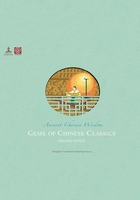
食疗本草 (shí liáo běn cǎo)
Materia Medica for Dietotherapy
Good diet cures more than doctors
The concept of dietotherapy or the treatment of various diseases through diet is deeply rooted in Chinese culture. People in the country used to consider dietotherapy a more beneficial approach in dealing with diseases than any other medical treatment.
Even today, the majority of Chinese firmly believe in the efficacy of dietotheropy and are more than willing to stick to strict diet regimens prescribed by their traditional Chinese medicine doctors.
Particularly, people would follow the concept of jikou or avoiding certain food when one’s ill or taking medicine. TCM doctors will tell their patients that certain food could conflict with the prescribed medicine or reduce its effectiveness. Therefore, the patients are advised to shy away from certain food in order to aid the medical treatment.
Thus, Chinese doctors and scholars published many dietary works through history, among which Shiliao Bencao or “Materia Medica for Dietotherapy” is considered one of the earliest, not only in China, but also in the world.
The book was authored by Meng Shen (621-713 AD), a famed scholar, medical scientist and dietician during the Tang Dynasty (618-907 AD). Meng was extremely interested in alchemy and medicine when he was a child. Later, he became a close friend of Sun Simiao (581-682 AD), a famous traditional Chinese medicine doctor who was known as China’s “King of Medicine.”
The scholar was appointed a local government official after he passed the imperial palace examinations and obtained the title of Jinshi or “Presented Scholar.” After experiencing some ups and downs in his career as an official, Meng retired to his home village in today’s Henan Province to concentrate on writing medical works.
One of his works, Buyang Fang or “Recipes of Tonic Treatment,” was later amended by Taoist Zhang Ding during the late ninth century and renamed Shiliao Bencao or “Materia Medica for Dietotherapy.”

The revised book had three volumes, containing a total of 227 entries. It listed in great detail the effects of various kinds of food such as chicken and duck meat, pork, beef, beans, vegetables, fish, honey, cereals, fruits and herbs. The book also explained in elaborated notes for each entry the side effects, jikou, preparation and the places of production of the food.
For instance, the book claimed that mixing bee honey with the egg whites of three chicken eggs can be used to cure poisoning and fever. It also said that cooked yellow-feathered, golden-clawed hens could help cure impotence.
Other strongly recommended treatments in the historical text included: crucian carp helps gastrointestinal balance; goat’s milk nourishes both lung and kidney; radish can improve one’s complexion; tea improves the large intestine, helps remove body heat and eliminate phlegm; and dried persimmon can strengthen one’s stomach and intestines.
Unfortunately, the book was lost about 400 years after it was published. Most of the content from the book we know today was recorded in other historical books or medical texts.
Also, in the late years of the Qing Dynasty (1644-1911), an incomplete and partly damaged hand written copy of the book dating from the Tang Dynasty was discovered in Dunhuang, a major stop on the ancient Silk Road in western China.
The copy, which contains 26 food proposals ranging from pomegranate to taro, later fell into the hands of Marc Aurel Stein (1862-1943), a British explorer. It is now part of the British Museum collection.
Meng Shen lived to the age of 92, which was phenomenal at a time when septuagenarians were deemed exceptionally rare. His philosophy “Diet cures more than the doctors” remains a popular proverb in China today.